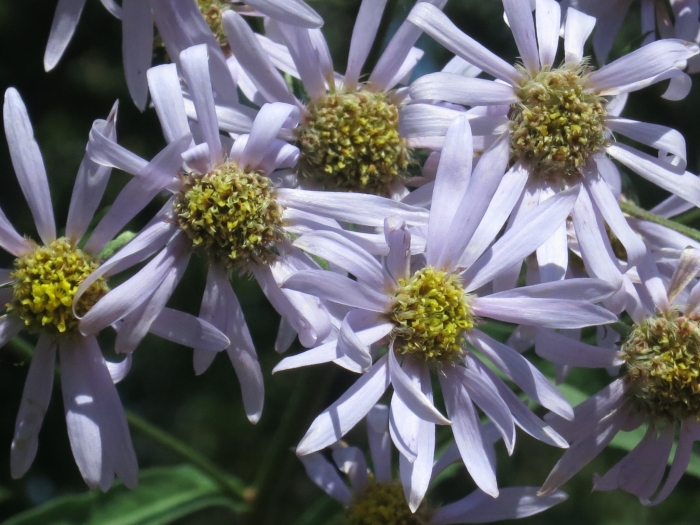Tartarian Aster
(Aster tataricus)
Tartarian Aster (Aster tataricus)
/
/

Repina Tatyana
CC BY 4.0
Image By:
Repina Tatyana
Recorded By:
Copyright:
CC BY 4.0
Copyright Notice:
Photo by: Repina Tatyana | License Type: CC BY 4.0 | License URL: http://creativecommons.org/licenses/by/4.0/ | Rights Holder: Repina Tatyana | Publisher: iNaturalist | Date Created: 2019-09-09T13:23:27-07:00 |

























Estimated Native Range
Summary
Aster tataricus, commonly known as Tartarian aster, is a perennial herb native to moist meadows, edges of streams, and wetlands in East Asia, including regions of China, Korea, and Japan. It is a robust plant that can grow to a height of 2 to 4 feet (0.6 to 1.2 meters) with a similar spread. The Tartarian aster is characterized by its large, daisy-like flowers with purple petals and yellow centers that bloom in the late summer to fall, providing a late-season nectar source for pollinators. The flowers are quite showy and can add a splash of color to the garden when many other plants have finished blooming.
In cultivation, Tartarian aster is valued for its late-season flowers and its ability to adapt to a range of soil conditions, though it prefers moist, well-drained soils. It is often used in border plantings, wildflower gardens, and as a naturalizing element in informal settings. Full sun to part shade is ideal for optimal flowering. While generally low-maintenance, the plant can be susceptible to powdery mildew and may require staking due to its tall stature. It is also known for spreading by rhizomes, which can be a benefit for filling in spaces but may also require control to prevent unwanted spread.CC BY-SA 4.0
In cultivation, Tartarian aster is valued for its late-season flowers and its ability to adapt to a range of soil conditions, though it prefers moist, well-drained soils. It is often used in border plantings, wildflower gardens, and as a naturalizing element in informal settings. Full sun to part shade is ideal for optimal flowering. While generally low-maintenance, the plant can be susceptible to powdery mildew and may require staking due to its tall stature. It is also known for spreading by rhizomes, which can be a benefit for filling in spaces but may also require control to prevent unwanted spread.CC BY-SA 4.0
Plant Description
- Plant Type: Herb
- Height: 3-6 feet
- Width: 2-3 feet
- Growth Rate: Rapid
- Flower Color: Blue, Purple
- Flowering Season: Fall
- Leaf Retention: Deciduous
Growth Requirements
- Sun: Full Sun, Part Shade
- Water: Medium
- Drainage: Medium, Slow
Common Uses
Border Plant, Butterfly Garden, Deer Resistant, Low Maintenance, Street Planting
Natural Habitat
Moist meadows, edges of streams, and wetlands in East Asia
Other Names
Common Names: Tatarinow’s Aster, Tatarian Aster, Gaemichwi, Shion, Zi Wan
Scientific Names: , Aster tataricus, Aster bracteatus, Aster bracteatus, Aster conspicuus, Aster conspicuus, Aster faurei, Aster fauriei, Aster fauriei, Aster intybaceus
GBIF Accepted Name: